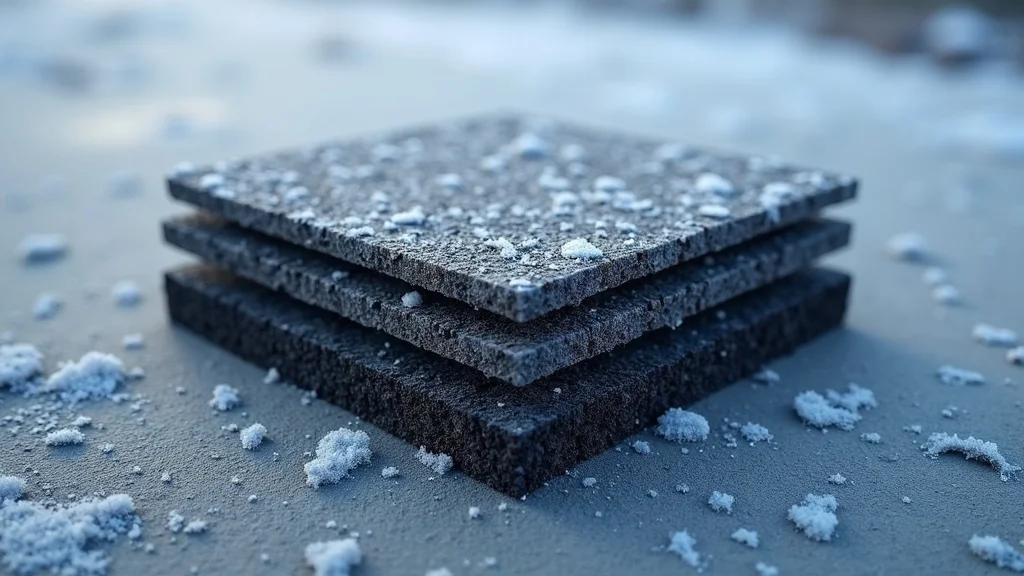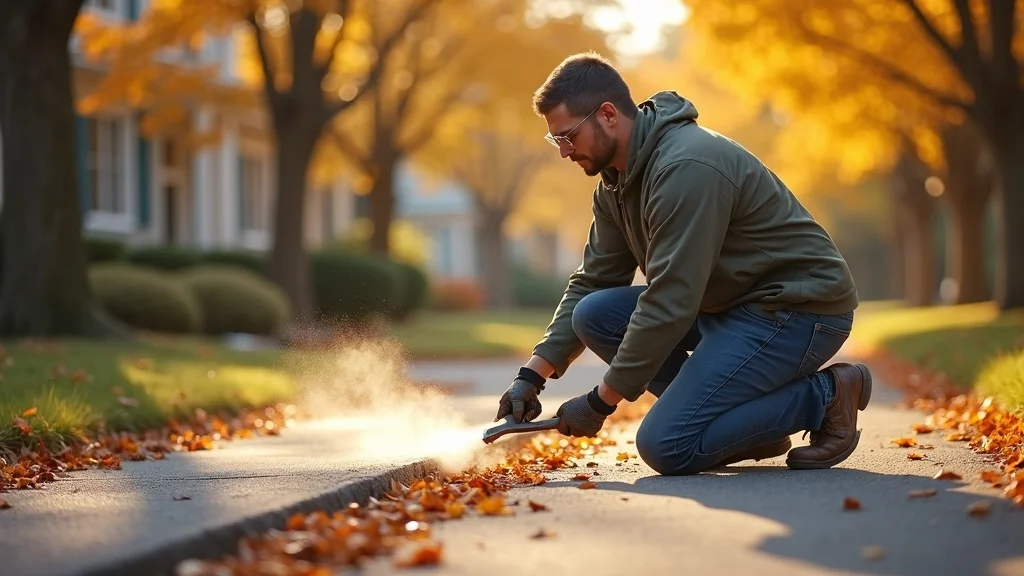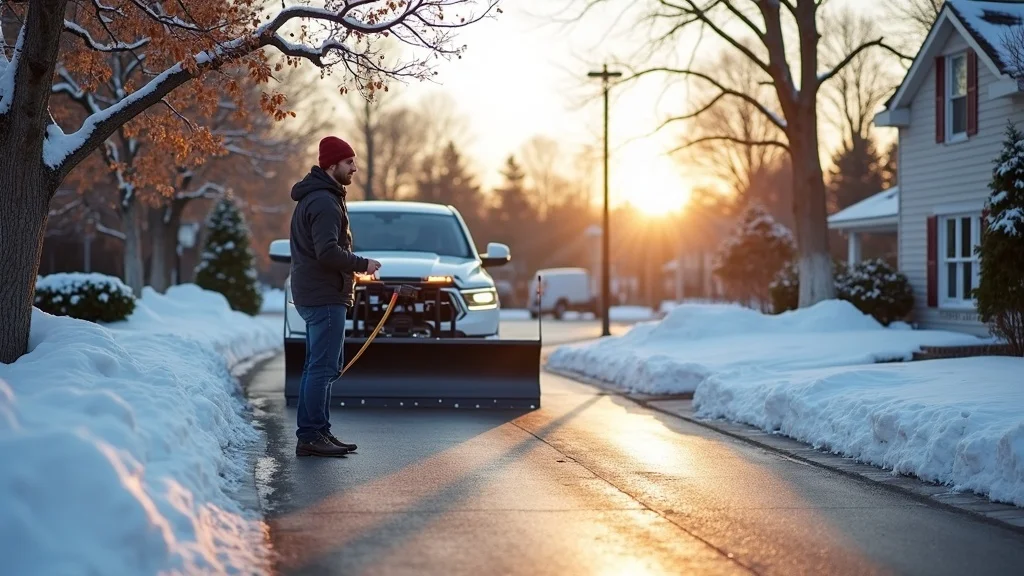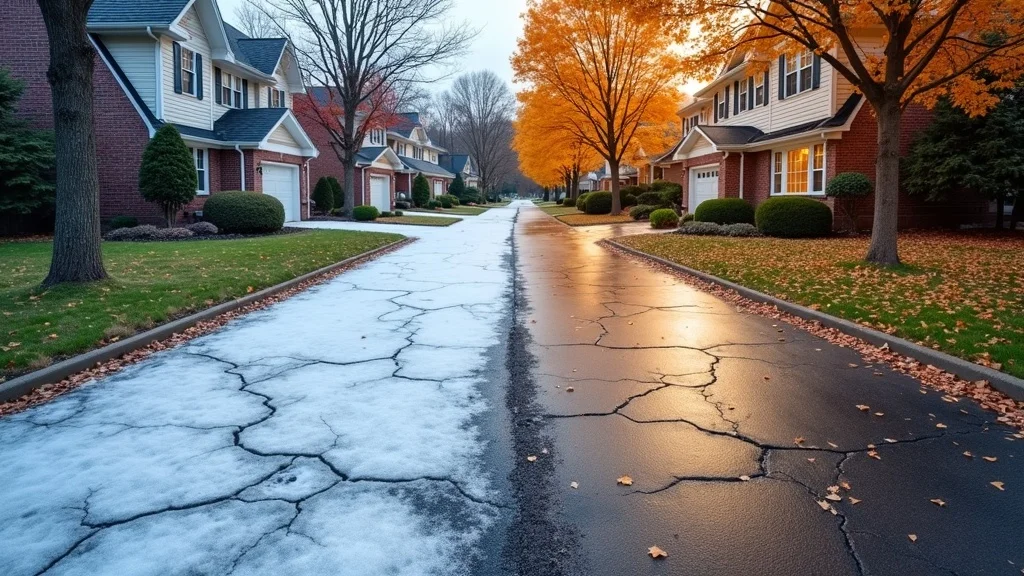Did you know that over 70% of costly asphalt repairs can be prevented with timely maintenance before the first frost? Most homeowners underestimate the havoc cold weather wreaks on asphalt driveways—turning minor cracks into major potholes before spring even arrives. If you want to avoid expensive asphalt repair next year, autumn is your window of opportunity. In this comprehensive guide, you’ll discover the science behind cold weather damage, proven maintenance strategies, and the practical steps you need to take now to protect your asphalt driveway and investment for years to come.
A Startling Fact: The Impact of Timely Asphalt Maintenance Before Winter
Every year, homeowners face unexpected headaches and steep bills due to asphalt repairs that could have been entirely avoided with fall upkeep. It’s not just about looks—asphalt maintenance before winter is a critical factor in driveway safety, durability, and long-term value. Asphalt is surprisingly vulnerable to the freeze-thaw cycles and rough snow removal practices during cold weather. Studies show that driveways receiving fall asphalt services remain in good shape nearly twice as long as those neglected until spring.
Preventative crack fill and seal coat applications during autumn are much more effective when compared to emergency or temporary repairs made in the winter months. Cold patch and asphalt mix solutions simply can’t offer a permanent solution once freezing temperatures set in. Ignoring regular maintenance not only leads to potholes and large cracks but can also raise costs by 30% or more due to the increased severity of damage. Proactive steps protect your property from salt, snow plows, and costly permanent repairs—making a fall maintenance plan a smart investment that truly pays off.

What You’ll Learn About Asphalt Maintenance Before Winter
- Why fall is critical for asphalt driveway longevity
- How cold weather affects asphalt paving and repairs
- Crucial steps for crack fill and preventative maintenance
- Best practices for asphalt maintenance and snow removal prep
Understanding Asphalt Maintenance Before Winter
The Science of Asphalt Driveway and Asphalt Paving in Cold Weather
Asphalt is a flexible material engineered to withstand traffic and temperature fluctuations, but it has a significant vulnerability: cold weather. When freezing temperatures arrive, water seeps into even the tiniest cracks in your asphalt driveway or parking lot. As nighttime lows dip below freezing, water expands, forcing cracks to grow and paving to destabilize. This creates potholes and larger fractures that compromise the structural integrity of your driveway in just one season of neglect.
The process is called a “freeze-thaw cycle.” Even a well-laid asphalt paving job can be undone by repeated freezing and thawing if small issues aren’t addressed in time. During the autumn, asphalt mix and repair materials work optimally because surface and ambient temperatures are still within the recommended range for permanent repairs. Once cold weather sets in, repairs become temporary at best, with cold patch or emergency asphalt repair only holding up until the thawed spring reveals worsening damage. Asphalt maintenance before winter ensures that repairs bond properly, cracks get filled, and your investment stays protected from the unpredictable winter weather ahead.

How Regular Maintenance Services Prevent Expensive Asphalt Repair
Consistent regular maintenance is the secret to an enduring, trouble-free driveway. Professional maintenance services, including thorough crack fill, seal coat applications, and spot repairs, can extend the life cycle of your asphalt driveway by five years or more. Addressing minor cracks and weak spots before winter halts their progression, while also preventing water from infiltrating below the surface and causing costly structural issues.
Preventative asphalt services like timely crack fill, edge patching, and application of a protective seal coat create a shield against cold weather, snow, ice, and road salt. These treatments make it harder for snow plows and excessive moisture to exploit weaknesses during snow removal. Asphalt paving contractors recommend a comprehensive maintenance plan every fall to avoid costly damages and keep your driveway or parking lot in peak condition through the harshest months.
For those looking to maximize the value of their maintenance efforts, understanding the financial benefits of proper paving is essential. Discover how asphalt paving done right can lead to significant cost savings and long-term durability, reinforcing the importance of quality work before winter sets in.
Why Fall Is the Optimal Season for Asphalt Maintenance Before Winter
Crack Fill Efficiency: Why Timing Matters
Autumn offers a unique combination of mild temperatures and dry conditions—both essential for effective crack fill and patching work. Crack fill products are carefully designed to flow into cracks, bond with the sides, and resist traffic and weather. When applied at the right time, especially before the first frost, they permanently seal gaps and eliminate the risk of water infiltration and expansion during freeze-thaw cycles.
If you wait too long and freezing temperatures set in, crack fill effectiveness drops significantly. The materials don’t adhere as well, take too long to cure, and frequently fail after the first significant cold snap. Pothole repair and filling potholes become more invasive and expensive. Fall gives paving contractors the best chance to use hot mix asphalt or premium crack fill products, dramatically increasing the longevity and durability of repairs. So, when planning your asphalt maintenance before winter, timing truly matters—start now, before cold weather turns small repairs into bigger problems.

Mix Asphalt: Temperature Requirements for the Best Results
For any asphalt repair or patching project, temperature is a decisive factor. Mix asphalt—either hot or cold—has minimum temperature thresholds for proper application. Hot mix asphalt requires daytime highs of at least 50°F for best compaction and longevity. These conditions are almost always met in early fall, but rapidly disappear with the onset of winter. Even premium cold patch solutions are less effective once the ground temperature drops and overnight freezing becomes routine.
Attempting repairs in cold weather increases the risk of poor adhesion and premature failures, which often means temporary repairs or repeat work in spring. Proper asphalt paving, crack fill, or sealing needs the surface and ambient temperatures to be just right for best grip and coverage. By tackling maintenance before winter—and certainly before daily highs fall below the 50°F mark—you ensure that every repair is a permanent, long-lasting solution, not just a stopgap measure.
Preparing for Snow Removal: Protecting Your Investment
One of the most overlooked benefits of fall asphalt maintenance is getting your driveway ready for winter’s snow removal demands. Freshly maintained and sealed surfaces resist gouges from plow blades, endure repetitive removal services, and withstand invasive de-icing salts commonly used on residential and commercial parking lots. Crack fill and seal coat applications shield the asphalt from moisture, which reduces the risk of potholes, crumbling, or frost heaving once snow and ice hit.
By investing in asphalt maintenance before winter, homeowners not only shield their driveways from the damage caused by snow removal but also save money long-term by minimizing the need for repairs. A well-maintained driveway will require less attention from even the best removal services during harsh weather, ensuring smoother, easier maintenance come spring. Don’t leave your driveway vulnerable—prepare it against abrasive plows and salty slush before the first storm arrives.

Comprehensive Asphalt Maintenance Checklist for Fall
- Inspect your asphalt driveway for visible damage
- Schedule crack fill and preventative patching
- Apply sealant on a dry, temperate day
- Arrange for fall asphalt services or maintenance services before the first frost

Watch this step-by-step guide for expert tips on inspecting, crack filling, sealing, and properly prepping your asphalt driveway for the winter months.
Common Issues Addressed by Asphalt Maintenance Before Winter
Preventing Damage from Snow Plows and Salt
Winter brings not just freezing temperatures, but also an onslaught of snow plows and de-icing salts to your asphalt driveway or parking lot. These necessary removal services can quickly strip away unprotected or cracked surfaces, leaving you with new potholes and costly asphalt repair in spring. Salt accelerates deterioration and drying, while plow blades can catch on broken edges. A strong crack fill and sealant barrier applied in the fall acts as armor, helping avoid costly damage and ensuring your driveway weathers the winter in better condition.
Applying preventative maintenance before winter ensures that the asphalt surface and edges are reinforced. This not only reduces the chances of plow damage but also means salt and melting water will have a much harder time penetrating and expanding beneath the surface, which often creates potholes by spring. In short, the right fall treatments fend off the most common and expensive issues associated with winter weather, keeping your surface smoother and safer for everyone.
Extending the Life of Your Asphalt Driveway with Regular Asphalt Maintenance
The longevity of your asphalt driveway rests heavily on consistent, annual care—especially ahead of cold weather. Fall asphalt maintenance goes beyond just temporary fixes; it rejuvenates your pavement’s protective layers, addresses emerging issues with crack fill and patching, and ensures a solid surface for snow removal equipment to glide over. This strategic approach extends the lifespan of your investment, delaying the need for full resurfacing and making your driveway or parking lot a source of pride all year round.
Without proactive asphalt services ahead of winter, small cracks and gaps transform into large faults—often requiring more invasive repairs and higher spending down the line. Developing a maintenance plan for every autumn, including preventive seal coat and crack patching, guarantees you’re prepared for the harsh winter that challenges all exterior surfaces. By opting for expert asphalt maintenance every fall, you protect not just your property, but your budget and peace of mind in the seasons to come.

People Also Ask: Key Asphalt Maintenance Before Winter Concerns
What temperature is too cold to do asphalt?
Asphalt paving and repairs are best done when the temperature is above 50°F (10°C). Most paving contractors agree that cold weather, especially below 40°F, is too low for effective crack fill, asphalt mix compaction, or seal coating. In cold temperatures, the materials don’t cure properly, leading to poor adhesion and reduced longevity. For permanent repairs and a smooth finish, ensure all maintenance tasks are completed while temperatures stay comfortably above this threshold.
Is October too late to seal a driveway?
October can still be an excellent month for seal coating your asphalt driveway, provided that daytime highs remain above 50°F and the weather is dry. It’s about more than the calendar—it’s the conditions that matter. If your region is experiencing early frosts or cold snaps, monitor daily temperatures and plan your maintenance accordingly. Sealing in colder, damp conditions rarely provides a durable, reliable layer; whenever possible, schedule your maintenance early to ensure the best results before winter weather fully settles in.
Can you do asphalt repair in the winter?
Winter asphalt repair is possible in emergencies, but solutions are often temporary. Products like cold patch might fill potholes and cracks to keep driveways safe until spring, but these fixes typically don’t last due to poor bonding and cold weather challenges. Permanent repairs—including crack fill, hot mix asphalt, and seal coat treatments—require moderate temperatures and are most successful when performed before winter. Acting in the fall helps you avoid recurring problems and the need for repeat winter repairs.
What do asphalt workers do in winter?
During the winter months, most paving contractors shift from regular maintenance services and major asphalt projects to emergency patching, equipment servicing, and planning for the upcoming season. Some tackle temporary pothole repair using cold patch materials or remove snow on commercial lots, but larger projects and full-scale paving are placed on hold until temperatures rise. Maintenance work and consultations in winter help homeowners get ahead on early spring maintenance planning.
Expert Quote: On Why Fall Asphalt Maintenance Before Winter Is Non-Negotiable
“Proactive asphalt maintenance before winter is your best defense against costly repairs come spring. Acting in fall protects your investment from the harsh freeze-thaw cycles.” – Pavement Industry Expert
Table: Asphalt Maintenance Before Winter vs. Spring Repairs
| Factor | Fall Asphalt Maintenance Before Winter | Spring Asphalt Repairs |
|---|---|---|
| Material Performance | Optimal | Moderate-Poor |
| Crack Fill Effectiveness | High | Medium |
| Cost | Lower | Higher |
| Risk of Further Damage | Minimized | Increased |
| Longevity of Repairs | Extended | Shorter |
FAQs: Asphalt Maintenance Before Winter
- How long does asphalt maintenance before winter take to complete?
Most standard maintenance projects can be completed in one to two days, depending on driveway size and the extent of repairs. Large parking lots or projects requiring extensive crack fill, patching, or seal coat application may take longer. Early scheduling ensures all work is finished before freezing temperatures arrive. - What is the best temperature range for asphalt paving?
The ideal temperature for asphalt paving and repair is between 50°F and 70°F (10°C and 21°C). This range allows for proper mixing, spreading, compaction, and curing, resulting in a longer-lasting, smoother surface. Working outside this temperature band increases the risk of defects and future problems. - Are there eco-friendly options for asphalt maintenance?
Yes! Many contractors offer low-VOC seal coats, recycled asphalt mixes, and environmentally friendly crack fill materials. Using these products reduces both your environmental impact and potential harm to surrounding landscapes, providing an ethical way to care for your asphalt driveway or parking lot before winter sets in.
Key Takeaways: Don’t Delay Asphalt Maintenance Before Winter
- Fall is the prime time for preventative asphalt services
- Cold weather can severely limit asphalt repair success
- Early maintenance equals long-term savings and durability
Ready to Protect Your Asphalt Driveway?
Don’t wait for winter to create potholes in your plans—or your property. Hire a qualified paving contractor for your fall asphalt maintenance before winter. Take action now, stay ahead of cold weather, and keep your investment in good shape for the seasons ahead. Call Us at (610) 366-9406 to schedule your service today!
If you’re considering more extensive projects or managing larger properties, it’s worth exploring the unique challenges and solutions involved in commercial asphalt paving. For a deeper dive into best practices, contractor selection, and strategies to ensure your business or facility gets the highest quality results, check out our guide on how to get the best from commercial asphalt paving. Expanding your knowledge now can help you make smarter decisions, avoid common pitfalls, and maximize the return on your paving investments—no matter the scale of your next project.


